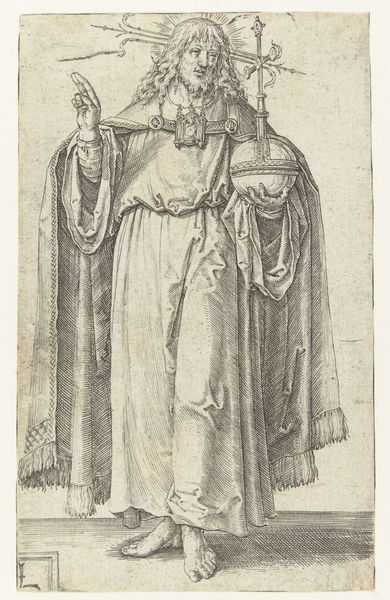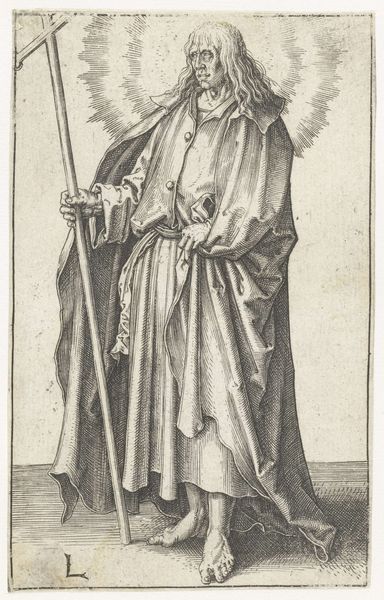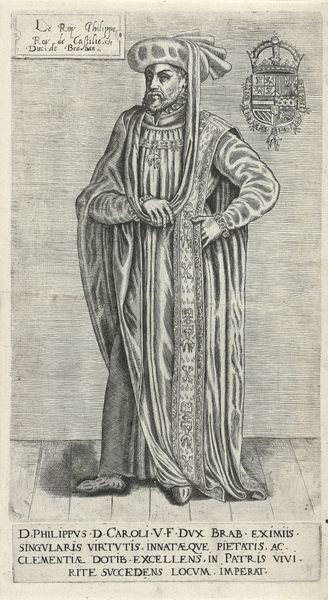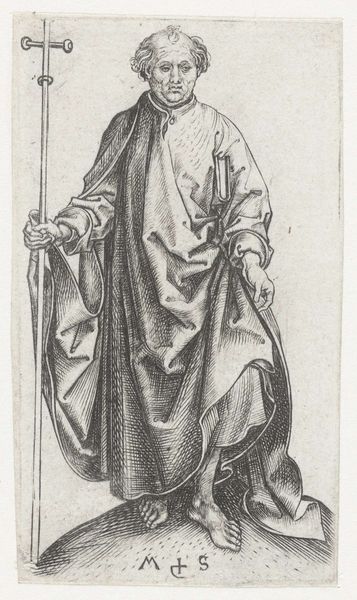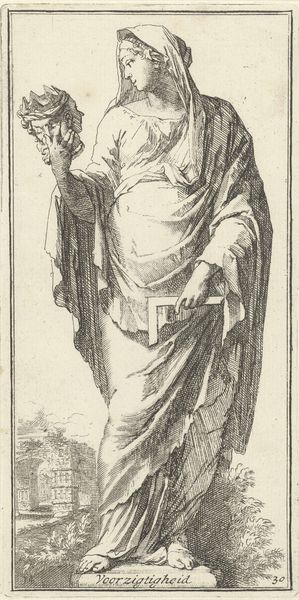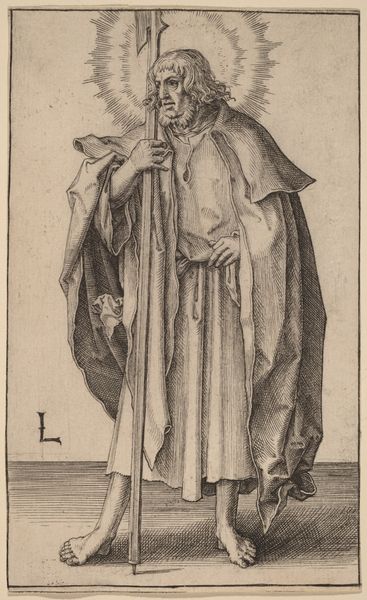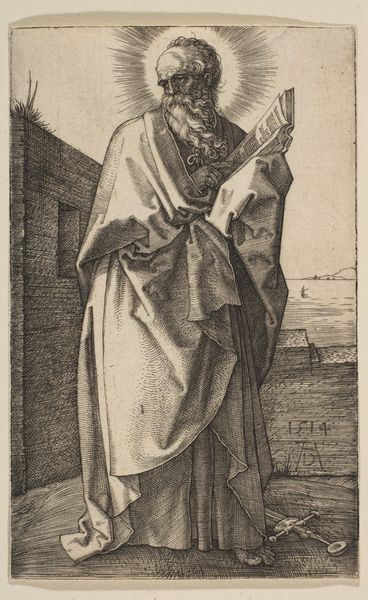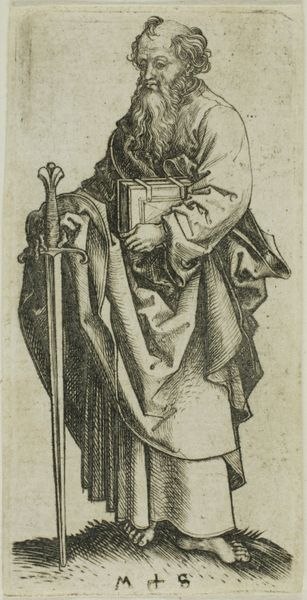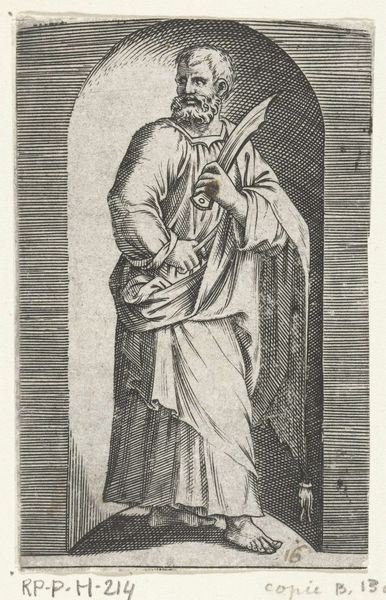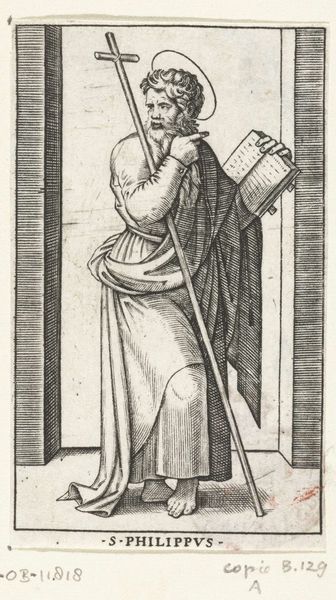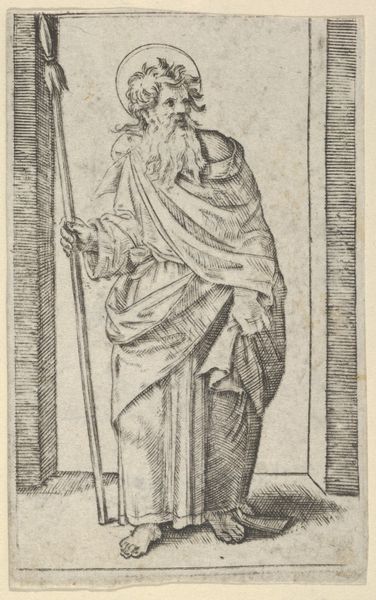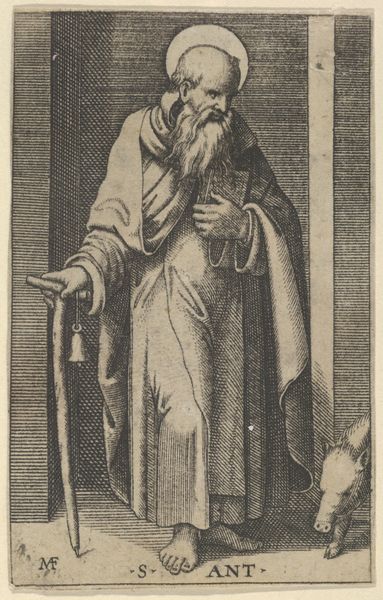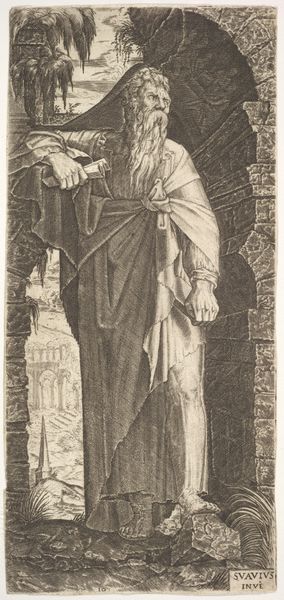
print, engraving
#
portrait
# print
#
figuration
#
history-painting
#
italian-renaissance
#
engraving
Dimensions: 4 5/8 x 2 13/16 in. (11.75 x 7.14 cm) (image)
Copyright: Public Domain
Curator: Standing before us is Lucas van Leyden's "Christ," created in 1513. This engraving on paper currently resides in the collection of the Minneapolis Institute of Art. Editor: My initial impression is one of quiet solemnity. The delicate lines of the engraving create a subdued yet powerful image, and his robes look incredibly tactile. Curator: Indeed. The formal composition is quite striking. Note the controlled lines defining Christ's robes, creating volume and texture, all within the limitations of a monochrome print. Editor: Absolutely. It's also worth considering the materials: the copperplate, the paper, and the tools necessary for such intricate work. Think of the physical effort involved, the sheer labor invested to reproduce and distribute this image. Were these widely distributed? Who had access to this image and why? Curator: An excellent point. The symbolism within the work merits close examination. The orb surmounted by a cross symbolizes Christ's dominion over the world, while the halo of thorns around his head alludes to his suffering. The placement of his hand in benediction underscores the subject’s purpose. Editor: And how does the status of the artist affect the meaning here? Leyden had workshop assistants—how does collaborative labor muddy the concept of singular artistic genius often promoted during the Renaissance? Did his assistants partake in this image production, or was it solely his? Curator: That's a crucial element to consider within the material context. The stylistic consistency suggests a high degree of control, yet the division of labor in workshops of that period is still under investigation, especially considering printmaking as a multiple. The question of originality in a reproducible medium invites an alternative framework for evaluating visual art from the Renaissance. Editor: Food for thought, indeed. I am now left considering this work within the context of social labor practices during the period. Curator: For me, it serves as a striking visual and formal synthesis of the complex spiritual narratives.
Comments
No comments
Be the first to comment and join the conversation on the ultimate creative platform.
